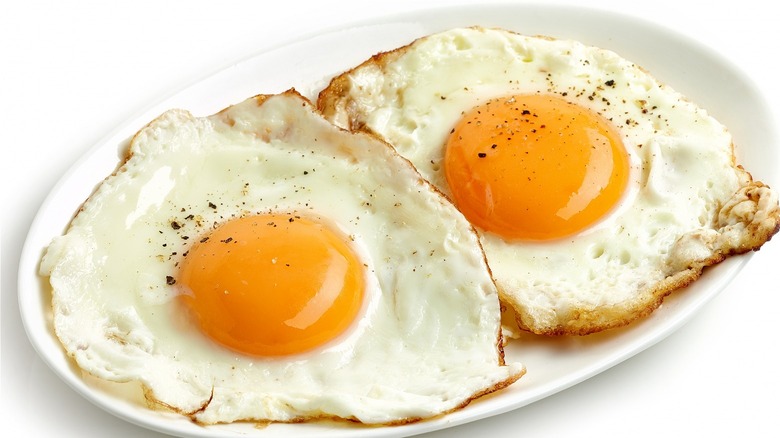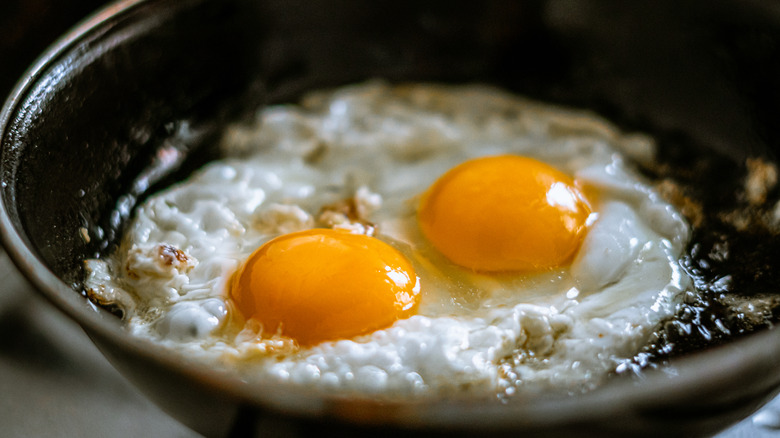The Trick For Perfectly Runny Fried Eggs Makes Sense
Once you've upgraded from a standard, loose, rubbery, sunnyside-up egg that could easily be mistaken for a child's play food to the fried egg, it's unlikely you'll turn back. Instead of cooking the egg at moderate heat in just a tablespoon or two of fat, fried eggs use oodles of oil and/or butter and a method called basting in order to get delicate brown edges, set whites, and runny yolks. But getting the timing just right for liquidy, poached-like yolks and set whites can be tricky.
But a simple idea from Eater may change all that. Instead of pouring the entire egg in at once, try separating the yolk from the whites before they hit the pan. When your oil is piping hot, plop the white in solo. Then, as you would with a normal fried egg, spoon the oil over the whites until they are nearly set and have brown doily-like edges. Finally, pour the yolk onto the center of the whites, as if it had always been there, and quickly baste it with one or two more spoonfuls of oil. You can even give it a flip if you prefer an over-easy egg. Then promptly remove it from the pan with a slotted spatula, careful not to get excess oil on the egg, as this will continue the cooking process off of the stove. And there you have a tantalizingly crispy but still-runny egg.
Why it works
Egg whites are made up of about 90% water and 10% protein, says Healthline. And if you've ever accidentally added water to a hot oily pan and had it sputter and spit back at you, you know that oil (fat) and water don't mix. By giving the whites a little extra time with the hot oil, it's able to set and get those gorgeous cloud-like bubbles that aren't achievable in poached or steamed eggs because the water and oil are fighting against each other, creating air pockets.
But if you're an egg connoisseur looking for the sumptuously molten yolk, you don't want it to face the same exposure to those high temperatures. Because while yolks are high in fat, they also hold a fair bit of protein, and that protein clumps together during cooking, which is what gives you medium or hard egg yolks. So by separating the yolk from the whites, you give each the time they need to do their part for a runny-but-crispy fried egg.

